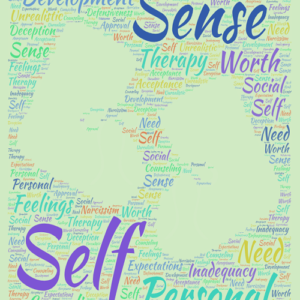Description
Brainstorming can be done either in a group, or by oneself. The key to effective brainstorming is suspending initial judgments until sufficient ideas are generated.
Creativity entails the ability to envision new and different viewpoints on a subject. It involves breaking down and restructuring our knowledge about the subject in order to gain new insights into its nature. However, developing a practical definition for an abstract concept like creativity is complicated because it has so many dimensions.
The need for creative problem-solving has arisen as a result of the shortcomings of logical thinking. Logical thinking progresses in a series of steps, each dependent on the outcome of the previous one. The knowledge gained from this process is merely an extension of what we know already, rather than being truly new. Logical thinking involves reproductive thinking; that is, it is thinking on the basis of similar problems encountered in the past.
Research indicates that thinking productively, not reproductively, generates highly fruitful creative thinking. When confronted with a problem, people thinking in this fashion are able to look at it from multiple perspectives and as a result, can devise a variety of ways to solve it. Creative problem-solving is a method that involves using imagination in addition to cognitive techniques, such as analogies, associations, and other mechanisms. This technique provides insight into a problem, which might not otherwise be obtained through conventional, traditional methods. Gaining new insights into a problem can lead to its reorganization and the development of innovative solutions.
In order to be creative, a person needs to be able to view things in new ways or from a different perspective, which in turn allows him/her to generate novel possibilities or alternatives. Tests of creativity measure not only the number of alternatives that a person can generate but their uniqueness as well. Creativity is linked to fundamental qualities of thinking, such as flexibility and tolerance of ambiguity. The goal of the Creative Problem-solving Test is to determine whether a candidate’s attitude and the manner in which he approaches problems are conducive to creativity.
Purpose: CAPSAT – R was developed to evaluate whether a person’s attitude towards problem-solving and the manner in which he or she approaches a problem is conducive to creative thinking.
Vitals
No. of questions: 36
Question type: Situational, self-report
Estimated completion time: 10 minutes
Shorter versions of assessment: N/A
Recommended age level: 18+
Qualification Level: Class A
Compliance: APA standards; EEOC standards (gender, age, ethnicity, disability)
Validation Information:
● Sample Size: 24,994
● Cronbach’s Alpha: 0.90
Features
Benchmarks: Available (general population and 107 industries)
Interview Questions: Available
Group Comparisons: Available
Report Includes:
● Summary
● Introduction
● Graphs
● Detailed narrative interpretation
● Strengths and Limitations
● Advice
Factors and Scales:
Overall Score plus 4 scales
● Comfort with Decision-making: Overall ability to make decisions competently and confidently.
● Flexibility: Assesses whether a person’s attitude toward problem-solving is open-minded
and flexible.
● Openness to Creativity: Overall attitude toward change, innovative solutions, out-of-the-box
thinking; ability to think creatively.
● Sense of Self-efficacy: Assesses whether a person believes in his or her ability to solve a problem effectively.







Reviews
There are no reviews yet.